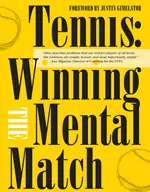Andy Roddick worked his way to an excellent win over Rafael Nadal in the semifinal at the 2010 Sony Ericcson Open in Miami (and ultimately won the tournament). He used a very effective mixture of big serves, effective groundstrokes and precise volleys to achieve this win.
Roddick has matured as a player. A few years ago, he won solely by hitting big serves and big forehands. Under Gilbert, he began working to add a volley to his arsenal, but at first it probably did him as much harm as good. It took awhile for him to become adept at when and how to use it, and now he finally has.
In particular, Roddick would have almost certainly lost the Nadal match without his volley. If Roddick had allowed Nadal to hit his serve return back anywhere in the court and then tried to beat him in strictly baseline-to-baseline rallies, he would have been hugely disadvantaged.
Nadal is faster than Roddick (even with Roddick's new, slimmed-down physique), steadier and has better groundstrokes off of both sides. Roddick would have had to hit an awful lot of aces to win.
But Roddick's volley has now changed the equation.
Nadal's serve return has not been known as his best shot, but by following his serve to net from time to time, Roddick made Nadal's job of returning vastly more difficult.
When returning against a player on the baseline, the objective is to hit it as deep as possible. In contrast, against a serve-and-volley player, the objective is to hit the return short and low.
If you hit the return short and low against a good baseliner, you get hurt. And if you hit the high-and-deep one against a volleyer, you also get hurt. The problem for the receiver is that he must choose one or the other in advance, since there isn't time to change his mind once the serve is in play.
It forces the receiver to make decisions (which is always an added difficulty) and keep him from getting any true rhythm or consistency on his return. And the server gets easy points whenever the receiver chooses the wrong return.
The volley has been re-emerging in recent years
Over the years, the game has evolved many times into many different forms. And it seems to be evolving yet again. The volley is beginning to reappear and I assume, at the highest levels of the game, increasing importance.
But it is not the volley of yesteryear, that of McEnroe, Edberg, Rafter, or even Henman. Their volleys were of the constant chip-and-charge, serve-and-volley variety, usually requiring a maneuvering volley or two before finishing the point.
By contrast, the new volley is a transition volley, hit after a severe groundstroke or serve has forced the opponent off-balance and onto the defense. It is opportunistic rather than continual.
The volleyer darts forward when he or she senses that the reply from a surprised or out-of-position opponent will be hit softly, high, or inaccurately. Instead of multiple volleys, the point is usually ended with the first volley or, at most, the second.
Roger Federer is good at the transition volley
These days, Roger Federer is the most obvious practitioner of this type of transition volley. Although adept at the net and quite capable of mounting an old-style serve-and-volley attack, he rarely does it.
Instead, he serves and volleys sporadically, just enough to keep his opponent guessing and insecure about hitting low-risk, deep, floating returns. The rest of the time he tries to get control of the point with his groundstrokes and looks to pick off high replies from opponents chased into the distant corners of the court.
His tremendous speed of foot and flexible hands allow him to make his moves suddenly and with deadly efficiency, deftly controlling the occasional difficult volley forced by an opponent who hits a better shot than anticipated.
The other players who make constant use of this type of volley are Justine Henin, David Nalbandian, Fabrice Santoro, and now, on occasion, even Rafael Nadal. The best of them are always on the lookout to jump an unwary opponent with a sudden net attack.
Santoro, in fact, virtually makes his living this way. If you took away his transition volley and forced him to stay back and simply slug it out with the horde of heavy-hitting baseliners populating the ATP top 100, he would have been driven off the pro circuit early rather than being able to play into his dotage.
It is, I believe, the volley that will separate more and more of the strong baseliners from the pack. Every top player hits the groundstrokes pretty well. At the very top of the game, particularly on the faster surfaces, the players need something extra. And they are starting to recognize this.



